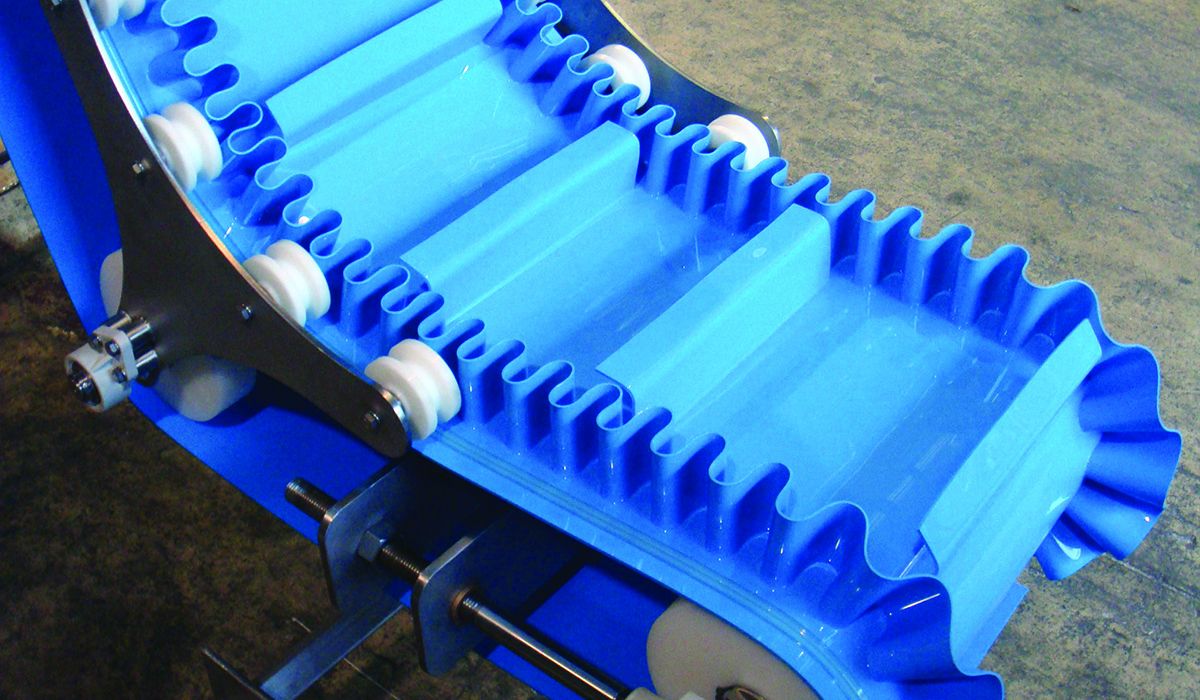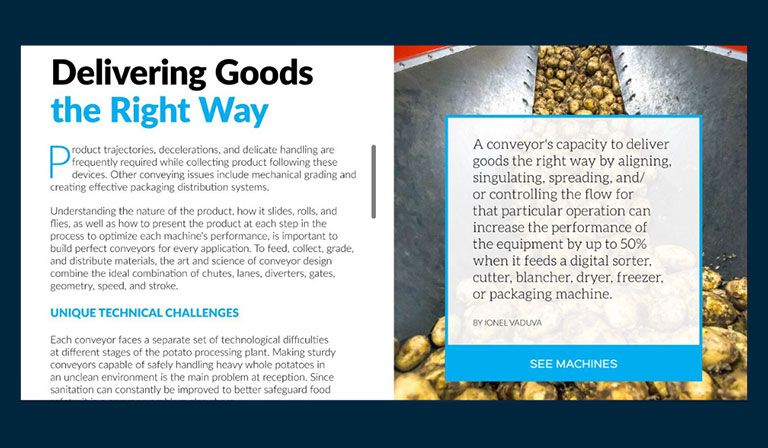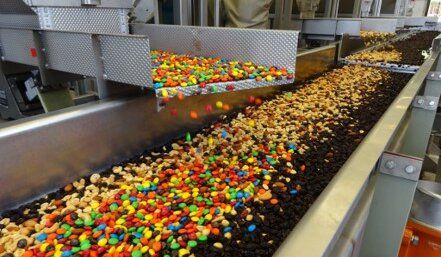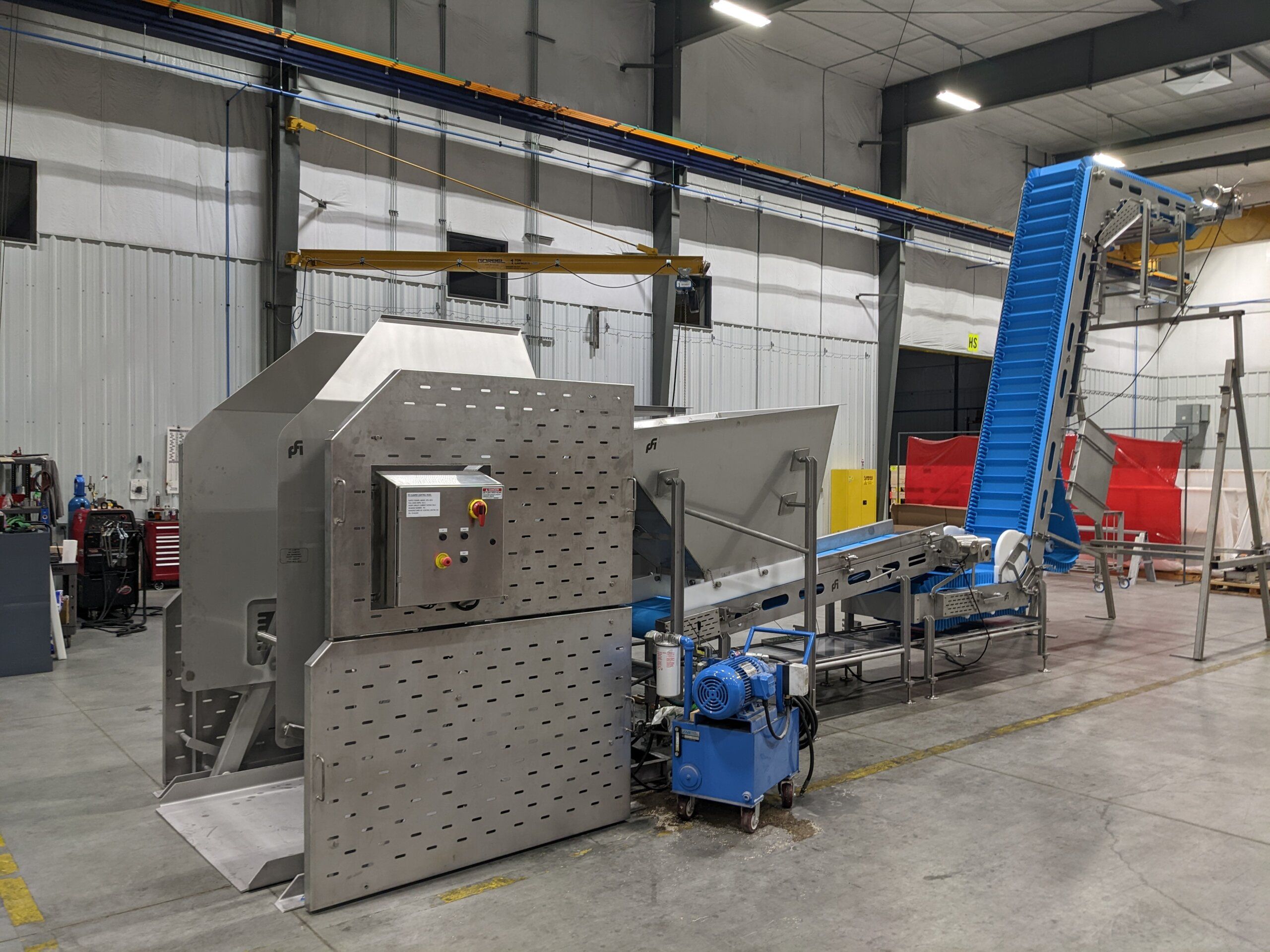
Buying Equipment, Sanitary Design
Choosing the Right Conveyor for RTE Food Manufacturing
Ready-to-Eat (RTE) food manufacturing moves fast, and your conveying systems need to keep up while protecting product safety and quality. Whether you’re producing ready meals, salads, sandwiches, or grab-and-go snacks, every conveyor in your line plays a critical role in maintaining freshness, preventing contamination, and ensuring an efficient, streamlined process.
With decades of experience working alongside RTE processors, PFI designs and manufactures sanitary conveying solutions built to handle diverse product mixes, high production volumes, and rigorous hygiene standards. This blog explains how to choose the right conveyor for your RTE application.
PRIORITIZE SANITATION ABOVE ALL
In RTE manufacturing, there’s no cooking step after assembly to eliminate contaminants, making sanitation your first and most important line of defense. Poorly designed equipment can harbor bacteria like Listeria or E. coli, which not only threaten consumer health but can also lead to costly recalls averaging $10 million and long-term brand damage. It’s far less expensive to prevent contamination than to manage an outbreak once it occurs.
WHAT TO LOOK FOR IN SANITARY CONVEYOR DESIGN
Your sanitary conveyors should be designed for maximum accessibility and ease of cleaning, with smooth, stainless steel construction, sloped surfaces, and IP69K-rated components where required. Open-frame designs and toolless disassembly minimize harborage points, allowing for fast washdowns and reducing downtime while improving food safety validation. Features such as clean-in-place systems or belt lifts further streamline sanitation and reduce operator handling, lowering the risk of contamination spread.
PFI’s conveyors for the RTE industry are engineered with these principles in mind, helping processors meet FSMA and USDA standards, protect their brand, and maintain high uptime.
MATCH THE CONVEYOR TYPE TO THE APPLICATION
No single conveyor type is ideal for every step in RTE production. Instead, selecting the right conveyor for each stage ensures optimal product handling and efficiency.
Common conveyor types for RTE lines include:
- Belt Conveyors – Versatile for moving packaged or unpackaged products through assembly and packaging stages; available in horizontal, inclined, curved, and trough layouts.
- Vibratory Conveyors & Feeders – Perfect for gently handling bulk ingredients like cut vegetables, shredded cheese, or toppings without damage; can also dewater, grade, or distribute product.
- Horizontal Motion Conveyors – The gentlest option for fragile, coated, or seasoned items; ideal for reducing breakage and seasoning loss.
PFI can integrate multiple conveyor types into one cohesive system, ensuring every product is handled appropriately from start to finish.
PROTECT PRODUCT INTEGRITY
RTE foods often include delicate components like leafy greens, soft bread, or crumbly toppings that can be damaged by rough handling. The right conveyor will maintain product integrity while still meeting throughput requirements.
PFI’s conveyors are designed to:
- Minimize drop heights and transfer points.
- Maintain gentle handling to prevent crushing or tearing.
- Prevent seasoning loss, moisture buildup, or ingredient displacement.
These features help keep your product looking and tasting as intended, which is key for quality and consumer satisfaction.
 CONSIDER FLEXIBILITY FOR YOUR PRODUCT MIX
CONSIDER FLEXIBILITY FOR YOUR PRODUCT MIX
RTE production lines often handle a variety of SKUs, including a range of ingredients for salads, sandwiches, snack trays, and more, all on the same shift. Your conveying equipment should be able to adapt quickly to different products and processing requirements.
PFI custom-configures every conveyor to your product mix and can design solutions that:
- Handle both hot and cold products.
- Switch between ingredients and product types with minimal changeover time.
- Integrate seamlessly with slicing, dicing, mixing, and packaging equipment from other OEMs.
OPTIMIZE FOR LAYOUT & INTEGRATION
In RTE manufacturing, floor space is valuable, and production flows are often complex. Choosing conveyors that can be configured to fit tight spaces or navigate around equipment helps you maximize your plant’s footprint.
PFI works closely with your team to design conveyors that integrate perfectly into your existing or planned layout. This ensures smooth product transitions, efficient line operation, and easier access for maintenance.
PFI: YOUR PARTNER FOR RTE CONVEYING SOLUTIONS
Choosing the right conveyor for your RTE food manufacturing process requires balancing food safety, product handling, flexibility, and efficiency. With decades of experience and a full range of sanitary conveyor types, PFI can help you configure a system tailored to your exact products, processes, and plant layout.
Contact us today to discuss your RTE application and start building the right solution for your line.
Related Resources
Quicklinks
© 2024 PFI. ALL RIGHTS RESERVED. | Privacy Policy | Terms and Conditions








